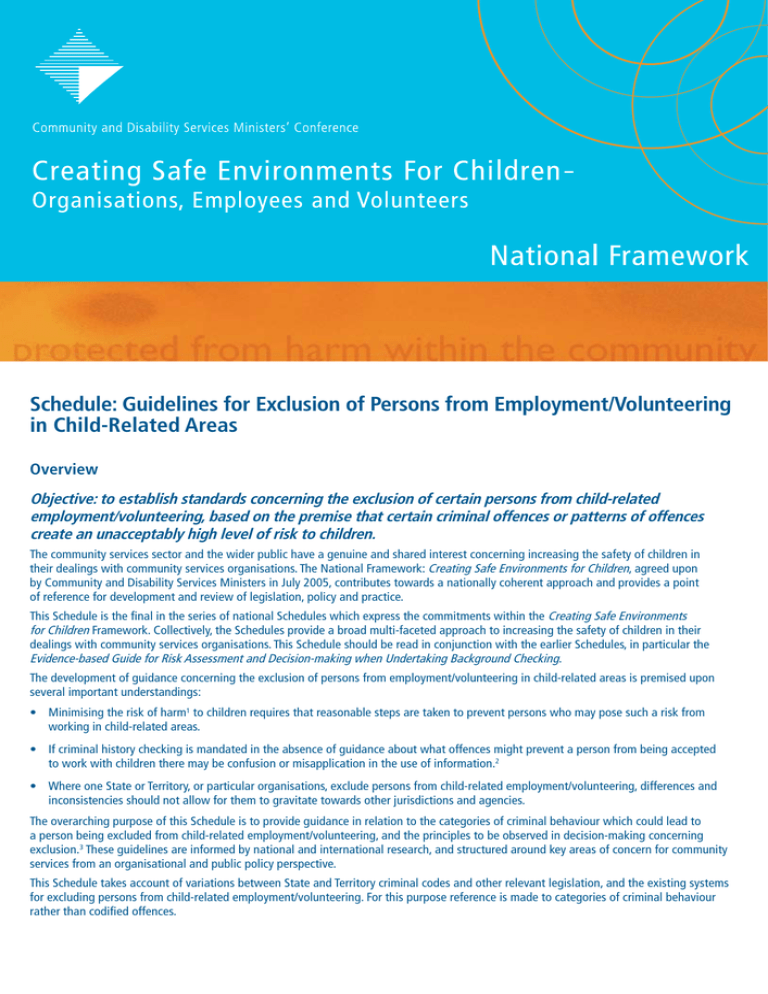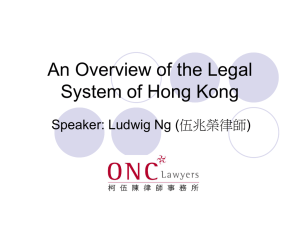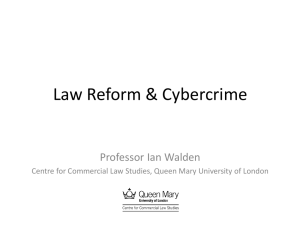
Schedule: Guidelines for Exclusion of Persons from Employment/Volunteering
in Child‑Related Areas
Overview
Objective: to establish standards concerning the exclusion of certain persons from child‑related
employment/volunteering, based on the premise that certain criminal offences or patterns of offences
create an unacceptably high level of risk to children.
The community services sector and the wider public have a genuine and shared interest concerning increasing the safety of children in
their dealings with community services organisations. The National Framework: Creating Safe Environments for Children, agreed upon
by Community and Disability Services Ministers in July 2005, contributes towards a nationally coherent approach and provides a point
of reference for development and review of legislation, policy and practice.
This Schedule is the final in the series of national Schedules which express the commitments within the Creating Safe Environments
for Children Framework. Collectively, the Schedules provide a broad multi‑faceted approach to increasing the safety of children in their
dealings with community services organisations. This Schedule should be read in conjunction with the earlier Schedules, in particular the
Evidence‑based Guide for Risk Assessment and Decision‑making when Undertaking Background Checking.
The development of guidance concerning the exclusion of persons from employment/volunteering in child‑related areas is premised upon
several important understandings:
• Minimising the risk of harm1 to children requires that reasonable steps are taken to prevent persons who may pose such a risk from
working in child‑related areas.
• If criminal history checking is mandated in the absence of guidance about what offences might prevent a person from being accepted
to work with children there may be confusion or misapplication in the use of information.2
• Where one State or Territory, or particular organisations, exclude persons from child‑related employment/volunteering, differences and
inconsistencies should not allow for them to gravitate towards other jurisdictions and agencies.
The overarching purpose of this Schedule is to provide guidance in relation to the categories of criminal behaviour which could lead to
a person being excluded from child‑related employment/volunteering, and the principles to be observed in decision‑making concerning
exclusion.3 These guidelines are informed by national and international research, and structured around key areas of concern for community
services from an organisational and public policy perspective.
This Schedule takes account of variations between State and Territory criminal codes and other relevant legislation, and the existing systems
for excluding persons from child‑related employment/volunteering. For this purpose reference is made to categories of criminal behaviour
rather than codified offences.
There is an explicit link between these guidelines and the guidelines pertaining to risk assessment and decision‑making because risk
assessment generally takes place within an established exclusionary framework.
Legislation in some States and Territories prohibits persons who have been convicted of certain offences from working with children.4
Discretionary exclusion is also undertaken, based upon risk assessment which acknowledges that offending history is an important
factor although it is not the sole consideration. Although the models guiding these practices vary between jurisdictions, the paramount
consideration across all systems is the wellbeing of children and their protection from harm.
These guidelines are not intended to be prescriptive. The different types of exclusion resulting from different processes established in
legislation highlight the importance of avoiding a rigid ‘criteria based’ approach to decision‑making.
Legislation in some States and Territories prohibits persons who have been convicted of
certain offences from working with children. Although the models guiding these practices
vary between jurisdictions, the paramount consideration across all systems is the wellbeing
of children and their protection from harm.
1. The Context for Guidelines about who may Work with Children
In the context of creating child‑safe environments an employer or organisation impliedly declares they have taken reasonable steps to
exclude persons who may pose a risk of harm to children. Adherence to guidelines and processes for excluding certain persons from
child‑related employment/volunteering is one of the many steps an organisation may take to create a child‑safe environment.
Some State or Territory based offender registration systems set an overarching exclusionary framework for prohibiting persons who have
been convicted of particular criminal offences from engaging in child‑related employment. In some jurisdictions these restrictions also
prohibit persons from undertaking volunteer activities in child‑related areas. The offences encompassed by the State and Territory registration
schemes are those which are generally of a sexual nature or where there is an aspect of offending against children.
Legislative or policy based systems for screening of employees/volunteers in child‑related areas include provisions for the exclusion of
persons on the basis of criminal history and other matters. Some of these systems have developed since the release of the Creating Safe
Environments for Children National Framework and the identification of this Schedule as a priority area for attention. Notwithstanding these
developments there continue to be a wide cross‑section of community services organisations which retain responsibility for criminal history
checking and decision‑making concerning whether or not to engage a person as an employee or volunteer working in a child‑related area.5
This is particularly so where organisations are engaging volunteers to work in child‑related areas, or where organisations may develop and
implement policy concerning specific requirements for particular positions.
2. Principles Guiding Exclusion of Persons from Employment/Volunteering in
Child‑related Areas
Whether the systems for exclusion of persons from child‑related employment/volunteering are legislative or policy based, the principles
which guide their operation should be consistent.
Principles which should govern the exclusion of persons from child‑related employment/volunteering include:6
• the wellbeing of children and their protection from harm is the paramount consideration in all decision‑making concerning acceptance
or exclusion of persons from working in a child‑related area;
• information concerning the categories of offending behaviour which may lead to exclusion should, as far as possible, be made known to
the general public and in particular persons who may be considering undertaking professional training related to working with children;
• persons seeking employment/volunteering should be treated equitably, fairly and in accordance with the principles of natural justice
and privacy;
• decisions should be made by persons with the knowledge, skills and abilities necessary to competently assess criminal
history information;
• decisions should be documented, transparent, defensible, based upon clear risk assessment guidelines and capable of review;
• applicants should be informed of the reason for their exclusion from child‑related employment/volunteering, and any relevant
review processes.7
3. Standards for Excluding Persons from Employment/Volunteering in Child‑related Areas
on the Basis of Criminal History
It is important to explicitly address the issue of what offence(s) or pattern of offences may indicate whether a person poses a risk to children.
As mentioned, each State and Territory may determine specific offences which preclude a person from employment/volunteering with children
under any circumstances, and where discretion will be exercised based upon a range of factors. These offences will be categorised according
to the criminal law of the particular jurisdiction. In general terms these different processes represent standards for excluding certain persons
from child‑related employment/volunteering.
Prohibition from Child‑related Employment/Volunteering
There are situations in which it is reasonable and justifiable to automatically exclude a person from working with children based upon their
history of criminal offences. The offences leading to such exclusion are considered to present a prima facie risk of harm to children, and
generally do not encompass a broad range of conduct necessitating assessment.
These serious offence groups may include:8
• Sex offences where a child is the victim
• Serious violence in relation to a child
• Child pornography offences
• Offences involving child prostitution
Potential for Exclusion from Child‑related Employment/Volunteering
There are also categories of offending behaviour where there can be a presumption that there is a presenting risk of harm to children but
further assessment is necessary before a decision to exclude a person can be made. These offences may capture a broad range of behaviour
requiring assessment of the implications for working with children.9
Where a person has a conviction for an offence of this type, careful assessment is needed to determine whether there are exceptional or
particular circumstances relevant to assessment of the risk of harm to children. These potentially influential factors underline the importance
of access to contextual information in relation to offences where further assessment is required.
These offence groups may include, but are not limited to:
• Sexual offences
• Violence offences
• Drug offences where children may be involved
• Child abuse offences, for example criminal neglect
• Offences involving exploitation of children
• Sexual ‘deviance’, for example bestiality
Beyond the categories of offending mentioned above, legislation may provide for the exclusion of persons from child‑related employment/
volunteering following risk assessment when the circumstances of another type of offence are known or patterns of offending are revealed. In
isolation a particular offence may not indicate a potential risk of harm to children. However, in combination with other offences there may be
significant indicators of a pattern of behaviour that raises concerns for the safety of children.
The Evidence‑based Guide for Risk Assessment and Decision‑making when Undertaking Background Checking identifies the importance of
considering the frequency and recency of offending, and the age of the perpetrator at the time of the offence. When considering a person’s
history of juvenile offending it is particularly important to have due regard for the influence of age‑related factors and the outcome of any
treatment or intervention programs.
Careful assessment is needed to determine whether there are exceptional or particular
circumstances relevant to assessment of the risk of harm to children. These potentially
influential factors underline the importance of access to contextual information in relation
to offences where further assessment is required.
4. Other Relevant Frameworks Guiding Decision‑making
Situations requiring special provisions
The guidelines for risk assessment and decision‑making acknowledge that:
situational characteristics, the vulnerability of specific population groups, and the proposed nature of contact with children may be
considered in legislation and/or the development of risk assessment frameworks.10
An organisational risk assessment may determine that situational risks require special provisions for the protection of children from harm.
This is especially so where the exercise of a high level of duty of care is required and where the population group is particularly vulnerable.
The most widespread example is where residential or home‑based care is provided for children.
Government departments responsible for authorisation/licensing of persons working in these situations may be required to make decisions
which take into account aspects of a person’s criminal history or previous care of children, beyond those matters generally considered in
working with children checks.
Processes to enable some form of review and appeal are a key consideration for the establishment
of any exclusionary scheme. The Human Rights and Equal Opportunity Commission has emphasised
the importance of clear review processes where persons are excluded from employment on the
basis of criminal record.
Application of standards in communities with specific needs
It is important to respect the diverse social and cultural contexts in which children live when implementing child‑safe practices, including
background checking of prospective employees and volunteers. The focus needs to be on enabling communities to observe statutory or other
standards. This means recognition of, and support for, the challenges these communities experience.
Organisations in remote areas and Indigenous communities may face practical and cultural challenges in using formal systems not
specifically designed for their needs. This is particularly so when the systems relate to excluding individuals from certain activities within
the community. These challenges are exacerbated by factors such as communication limitations, isolation and high staff turnover.
Any formal system must consider the capacity of communities to comply with administrative process requirements. For example, proof of
identity for background checking may need to be reconsidered in communities where a person may have several names, or where there is
ambiguity surrounding birth records.
Consultation with communities is a key to understanding local issues and existing mechanisms for protecting children. Collaborative work
with communities is also essential to ensure that local practices are both compliant with the exclusionary framework, and meaningful
to the community.
5. The Importance of Review and Appeal Processes
Processes to enable some form of review and appeal are a key consideration for the establishment of any exclusionary scheme.
The Human Rights and Equal Opportunity Commission has emphasised the importance of clear review processes where persons are
excluded from employment on the basis of criminal record.
At the very least there should be an opportunity for a person with a criminal record to explain the circumstances surrounding their
convictions, if that conviction becomes relevant to the decision‑making process. 11
States and Territories are responsible for the development and management of review and appeal processes that provide for natural justice
and procedural fairness. In some jurisdictions review and appeal processes may be established within legislation and specific statutory
provisions will guide their operation. Where persons are prohibited from working with children or subject to a life‑long ban in accordance
with legislation there may not be provision for review or appeal.
Review and appeal processes must be informed by relevant knowledge and undertaken by persons who have capacity for structured
decision‑making, understand the settings in which child‑related employment/volunteering takes place and are competent in the application
of natural justice principles and procedures.
Systems for persons to register grievances, request a review, or appeal the outcome of a decision may be managed through tribunals,
administrative decision‑making bodies and courts. It is important that review and appeal processes are governed by standards of best
practice for the operation of such bodies, including:
• information about the review/appeal process is made known to all persons who may be affected;
• the opportunity is provided for persons to make submissions concerning the circumstances surrounding an offence/charge;
• the opportunity is provided for independent representation and involvement of witnesses and support persons;
• decision‑making is consistent and impartial.
Consideration of the Burden of Proof
Prior to establishing any system for excluding persons from child‑related employment/volunteering it is important to clarify how the issue of
burden of proof will be managed.
Existing screening systems allowing for exclusion of certain persons from child‑related employment/volunteering reveal variations in where
the burden of proof resides, depending upon the nature of the decision and the basis for decision‑making. In cases where the criminal history
information relevant to the individual suggests a prima facie risk of harm to children it may be appropriate that the individual bears the onus
of proving they do not pose such a risk. Conversely, where the criminal history of an individual does not indicate a prima facie risk but where
there are other strong indicators of risk that cause concern, it may be appropriate for the decision‑maker to bear the onus of proving that the
individual poses a risk of harm to children.
Existing screening systems allowing for exclusion of certain persons from child‑related
employment/volunteering reveal variations in where the burden of proof resides, depending
upon the nature of the decision and the basis for decision‑making.
In Summary
Exclusion of certain persons from child‑related employment/volunteering does not stand alone in ensuring the safety and wellbeing of
children in their dealings with organisations. It is one further measure in the suite of strategies incorporated within the national Schedules
as part of the Creating Safe Environments for Children Framework. These strategies will continue to be informed by the developing area of
research concerning the causes, consequences and prevention of harm to children in organisational settings.
The guidance and decision‑making concerning the exclusion of certain persons from working with children must place priority upon the
protection of children from harm and minimising associated risks, whilst being ethical, defensible and informed by emerging knowledge.
These guidelines for excluding persons from child‑related employment/volunteering in conjunction with the Evidence‑based Guide for Risk
Assessment and Decision‑making when Undertaking Background Checking offer a community services perspective towards increased
national coherence in this area.
End Notes
1 In the context of the Creating Safe Environments for Children National Framework ‘harm’ means physical, sexual, emotional or
psychological abuse and neglect of a child.
2 It is important to note that the focus for this Schedule is upon criminal offences or information related to criminal records, although at
the State and Territory level other matters may be deemed relevant to decision‑making concerning exclusion of persons from child‑related
employment/volunteering.
3 The Schedule does not seek to provide direction as to the specific assessment of the level of risk to children.
4 Terms such as ‘prohibit’, ‘ban’ and ‘exclusion’ may have a particular meaning within the legislation of a State or Territory. In the context
of these guidelines the language used is not intended to reflect the specific interpretation of any one jurisdiction.
5 This decision‑making authority is subject to a person not being prohibited by legislation from working in a child‑related area in
accordance with prohibited employment regimes or jurisdiction based offender registration schemes.
6 There may be specific provisions within a jurisdiction with regard to application of the principle of natural justice and the right to review,
particularly where the offending history of an individual is considered to pose an insurmountable risk of harm to children.
7 Any decision‑making concerning exclusion of persons from child‑related employment/volunteering should also be cognisant of industrial
relations issues and adhere to applicable legislation.
8 State/Territory legislation may allow for discretionary exclusion in relation to some of these offence types.
9 Western Australia Criminal Record Checking (Working With Children) Bill 2004, Rationale for Offence Categories (as at 13 September
2004) (Department Document).
10 Community and Disability Services Ministers’ Conference (2006) Evidence‑based Guide for Risk Assessment and Decision‑making when
Undertaking Background Checking, National Schedule, p.4.
11 Human Rights and Equal Opportunity Commission (December 2004), Discrimination on the Basis of Criminal Record, Discussion Paper,
pp.37–38.
Selected References
Beyer, L., Higgins, D., and Bromfield, L. (2005) Understanding Organisational Risk Factors for Child Maltreatment – A Review of Literature,
National Child Protection Clearinghouse, Australian Institute of Family Studies, Melbourne.
Community and Disability Services Ministers Conference (2005) Creating Safe Environments for Children – Organisations, Employees
and Volunteers, National Framework.
Community and Disability Services Ministers’ Conference (2006 a) Guidelines for Building the Capacity of Child‑Safe Organisations,
National Schedule.
Community and Disability Services Ministers Conference (2006 b) Evidence‑based Guide for Risk Assessment and Decision‑making when
Undertaking Background Checking, National Schedule.
Community and Disability Services Ministers’ Conference (2007) Guidelines for Information Sharing Across Jurisdictions, National Schedule.
Davidson, H. (1985) ‘Protection of Children through Criminal History Record Screening: Well‑Meaning Promises and Legal Pitfalls’,
Dickinson Law Review, Vol. 89, No.3: 577–603.
Department of Community Development, Western Australia (2006), Working with Children Check Assessment Guidelines.
Department of Health, Home Office, Department of Education and Employment (1999) Working Together to Safeguard Children,
Stationery Office, London.
Local Authority Social Services Letter: LASSL (2005) ‘Identification of Individuals who present a Risk to Children’, Accessed January 2006 at,
http://www.everychildmatters.gov.uk/socialcare/safeguarding/risktochildren/
Human Rights and Equal Opportunity Commission (November 2005), On the Record: Guidelines for the prevention of discrimination
in employment on the basis of criminal record.
National Child Protection Clearinghouse (2006) ‘Child maltreatment in organisations: Risk factors and strategies for prevention’,
Child Abuse Prevention Issues, No.25, Australian Institute of Family Studies.
New South Wales Commission for Children and Young People (2004) The Working With Children Check Guidelines. NSW Commission
for Children and Young People, Sydney.
New South Wales Commission for Children and Young People (2005) Evaluation of the Working With Children Risk Assessment Model,
Literature Review. NSW Commission for Children and Young People, Sydney.
Queensland Crime Commission, Queensland Police Service (2000) Project Axis, Child Sexual Abuse in Queensland: Responses to the Problem.
Royal Commission into the New South Wales Police Service conducted by Commissioner: The Hon Justice JRT Wood (1997) New South Wales
Police Integrity Commission, Sydney.
Smallbone, S. and Wortley, R. (2000) Child sexual abuse in Queensland: Offender characteristics and modus operandi, Queensland Crime
Commission and Queensland Police Service, Brisbane.
The Bichard Inquiry Report (2004) The Home Office, London.




